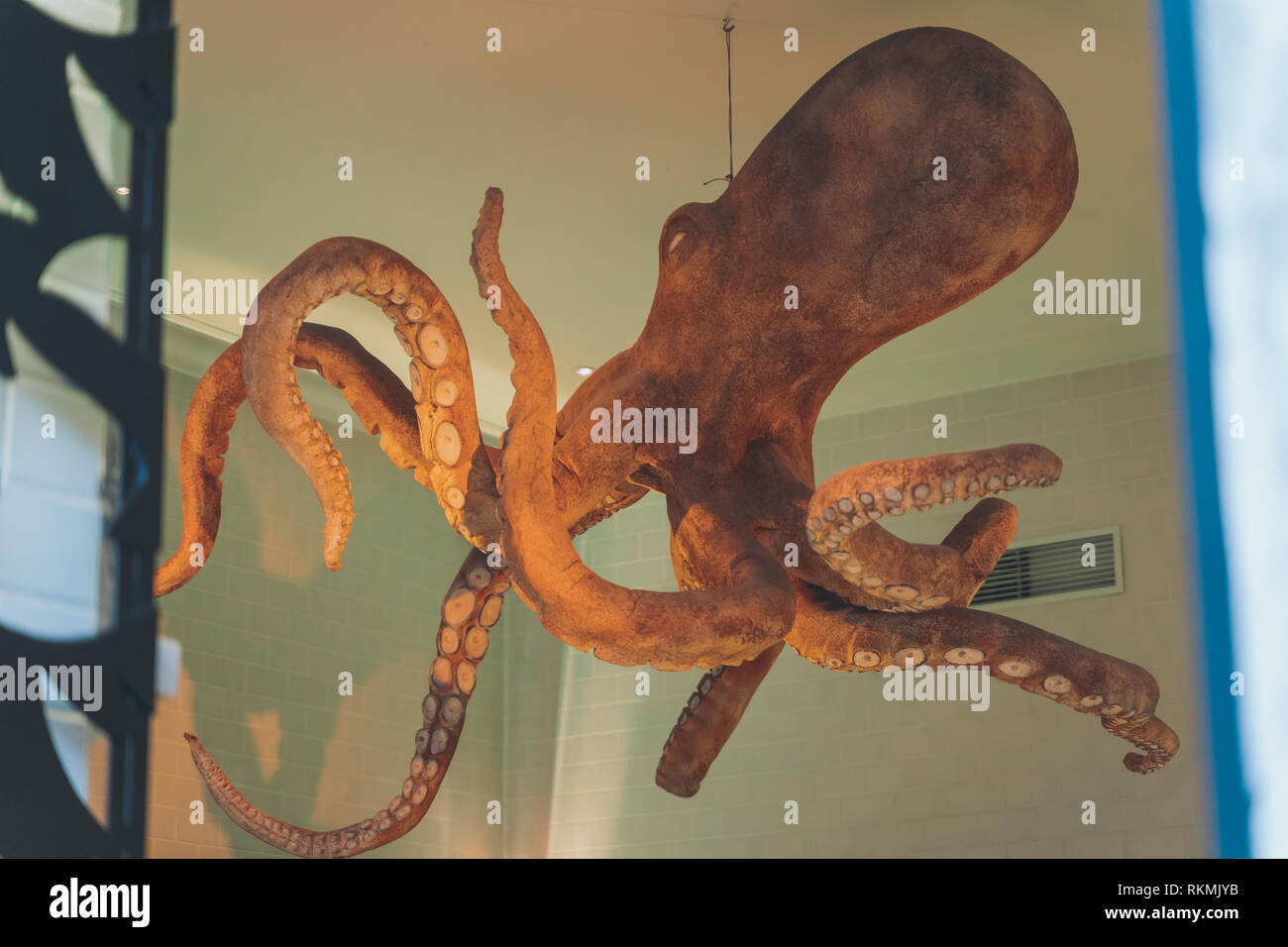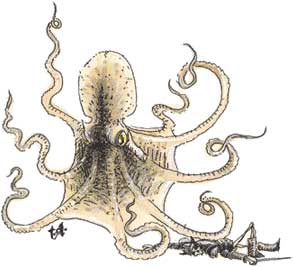

Some claim that octopuses are psychic, as Paul was made famous by predicting all seven winning teams in the 2010 FIFA World Cup, although this is not scientifically supported.The female giant octopus guards her eggs 24 hours a day and in the process starves herself. Some researchers even claim that they are capable of motor play and having personalities. They have about 300 million neurons.They have been known to open tank valves, disassemble expensive equipment and generally wreak havoc in labs and aquariums. The octopus brain has folded lobes (a distinct characteristic of complexity), visual and tactile memory centers. They have the ability to solve simple puzzles, open childproof bottles and use "tools".

These responses include jetting water, changing body texture, and other behaviors that are consistently demonstrated to specific individuals. In the third century AD, Roman natural historian Claudius Aelianus wrote "Mischief and craft are plainly seen to be the characteristics of this creature." Giant Pacific octopuses are commonly kept on display at aquariums due to their size and interesting physiology, and have demonstrated the ability to recognize humans that they frequently come in contact with. Octopuses are ranked as the most intelligent invertebrates. In the Indian Ocean, it is found from South Africa to Kenya, India, and Vietnam to Australia. In the Atlantic, it is found from Massachusetts to southern Brazil, and from Morocco to Angola. It is found to a depth of 150 metres (490 ft), but does not usually swim deeper than 30 metres (98 ft). The bull shark is commonly found worldwide in coastal areas of warm oceans, in rivers and lakes, and occasionally salt and freshwater streams if they are deep enough. Octopuses also have chemotaxis, or the ability to taste by touch. Parker found that the largest suckers on a GPO is about 6.4 cm (2.5 in) and each can support 16 kg (35 lb) each. Guinness World Records lists the biggest as 136 kg (300 lb) with an arm span of 9.8 m (32 ft) American zoologist G.H. The larger individuals have been measured at 50 kg (110 lb) and have a radial span of 6 m (20 ft) However, highly questionable records of specimens up to 272 kg (600 lb) in weight with a 9-m (30-ft) arm span have been reported. Adults usually weigh around 15 kg (33 lb), with an arm span of up to 4.3 m (14 ft).

dofleini is distinguished from other species by its sheer size. All of these abilities are under nervous system control.Į.
#Giant octopus skin
Dermal muscles in the octopus's skin can create a heavily textured look through papillation, or cause skin to appear smooth. Octopuses are also able to alter their skin texture, providing even better camouflage. Sub categories of chromatophores include iridophores (reflective platelets) and leucophores (refractive platelets). By contracting or expanding tiny pigment-containing sacs within cells known as chromatophores, an octopus can change the color of its skin, giving it the ability to blend into the environment. The mantle of the octopus is spherical in shape and contains most of the animal's major organs. Many of the suckers are lined with papillae or hooks for adhesion. The octopus has eight arms, each of which has two rows of suckers. All cephalopods have bilateral symmetry, a shell gland, a mantle, and well-developed head with sucker covered arms.


 0 kommentar(er)
0 kommentar(er)
